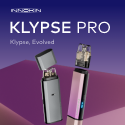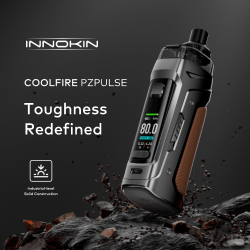It’s widely believed that the LiPo battery packs used in DNA200/250 and custom box mods need to be charged/discharged several times before they reach their peak performance.
Is this true?
To find out I took three new 3S packs and balanced charged them at 5A on an iCharger106B+ to 12.60V followed by a discharge to 9.0V at 20A constant-current. I did this a total of five times for each pack with a 60 second rest between each step. A lot of effort was made to ensure that the pack temperatures were consistent from cycle to cycle.
As you can see there was no increase in the capacity of the pack or an increase in its voltage while being discharged (which would indicate a decrease in its internal resistance).
For two of the three packs I measured the internal resistance before and after the tests were done:
Turnigy 25C-35C 2200mAh before = 18.3 mOhms
Turnigy 25C-35C 2200mAh after = 18.5 mOhms
MaxAmps 100C 2250mAh before = 21.9 mOhms
MaxAmps 100C 2250mAh after = 22.8 mOhms
The break-in cycles didn’t lower the internal resistance of the packs. In fact, they did exactly what any use of the pack does…ages the pack and increases its internal resistance.
The break-in cycling did not improve the performance of any of the three packs. It only wasted five of the limited number of cycles available before the packs would need to be replaced.
I also did five break-in cycles for each of the ten 1800mAh 3S LiPo packs I recently tested. Those break in cycles were done at some pack assembler’s typical recommended levels, 1C charge and 2C-3C discharge. There was no increase in performance between cycle 1 and cycle 5 for any of the packs.
Will this be the case for every LiPo? I don’t know.
There might be some LiPo’s that were not fully formed (initialized) at the factory in order to save money. Their performance would increase during the first few cycles. There also might be some that were stored for a long time before being used. This can cause the thickening of an important chemical divider (the SEI layer) between certain parts of the battery, increasing its internal resistance. Cycling the battery can reduce its thickness and restore some performance.
I know that many in the R/C community feel strongly that this cycling is needed but the tests described above and my recent testing of ten different 1800mAh 3S LiPo packs showed no increase in performance after being cycled a few times.
I have an idea why some might feel they are seeing an improvement in performance though.
LiPo cells, which use lithium-cobalt chemistry, show a very small change in voltage for a big change in capacity during most of the discharge compared to other Li-Ion chemistries. This “flat discharge curve” is one of the big benefits of using LiPo’s.
But this flat discharge curve also means that just a small change in the voltage of the battery can result in a big change in the capacity the battery delivers to cutoff voltages above 3.2V or so. If the pack is warm its internal resistance drops and the voltage the pack runs at is higher. This allows the pack to run for a lot longer before dropping to the cutoff voltage.
Since the outer wraps of a LiPo pack are very effective heat insulators the internal temperature of a LiPo pack can be a lot higher than the external temperature. It can seem to be only a bit above room temperature but actually be much warmer. Unless the pack is allowed to sit for at least an hour after charging, two hours or longer for larger packs, the internal resistance could be lower than when the pack was first used in the tests.
This would cause the packs to run at a higher voltage, making it seem that its performance had improved with cycling. But the improved performance was really only due to the pack being warm.
I am not saying that everyone who cycles their packs and says they see an improvement is wrong!
I am not saying that no LiPo packs respond to break-in cycling!
I am merely saying that in my testing of thirteen different packs I see no sign of break-in cycling having any effect on performance. It shouldn’t though. Properly formed packs, not stored for months and months, should not need any sort of break-in to reach their best performance levels.
I’d be interested in hearing your experiences regarding breaking in LiPo packs, especially if you took measures to make sure internal pack temperatures were consistent for each cycle.
Thanks!
Here are the three discharge graphs: https://imgur.com/a/G0DSM














 Store
Store












